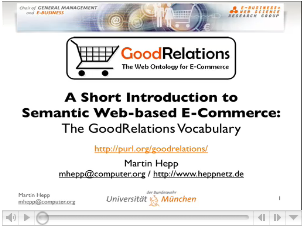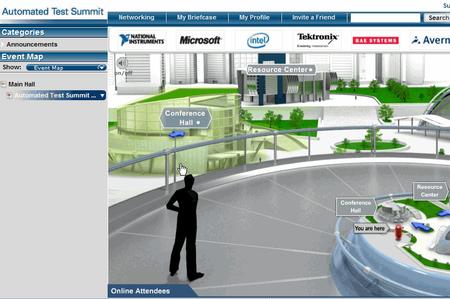The financial crisis at Wall Street seems to become more and more severe with the plunge of Dow Jones in recent days. A question is, however, generally overlooked by many people---who will be the winner in this financial crisis?
Some people may answer by no winners and we are all losers. But it could not be true. Whenever there are losers there must be winners. For example, is Warren Buffet a winner? Many people may say so since Mr. Buffet is likely to gain more than he loses in this crisis. So will the winners just be a small group of the Buffet-like people? The answer might be surprising to many people. Believe it or not, United States of America as a nation could possibly be the biggest winner of all!
 A private Chinese economist, Junluo Liu (Chinese: 刘军洛) published recently a brilliant analysis on the eventual effect of this crisis. If you may read Chinese, I would strongly recommend you going to read the original article yourself. Otherwise, I am briefly introducing his analysis here and add a few of my own comments at the end.
A private Chinese economist, Junluo Liu (Chinese: 刘军洛) published recently a brilliant analysis on the eventual effect of this crisis. If you may read Chinese, I would strongly recommend you going to read the original article yourself. Otherwise, I am briefly introducing his analysis here and add a few of my own comments at the end.
Crisis: rebuilding the foundation of USA
Crisis, its Chinese translation says "danger and chance" (Chinese: 危机). Unlike the western tradition that favors precision and strictness of the meaning of words, the oriental tradition (especially the Chinese tradition) respects broadness and thoughtfulness of the meaning of words. Hence when we translate the English "crisis" into Chinese, it becomes "extreme danger but with lots of chances." This is exactly what Junluo shared.
Junluo claimed that this crisis to USA might be a great chance of reformation while to the rest of the world (especially China) would be a true disaster. This claim is quite a controversy to the present mainstream opinion that China might replace USA being the leader of global economy after the crisis.
Who will be the winner? It would be the United States of America, Junluo answered.
There is one common character between Junluo and me. Both of us like to discover the essence of a present event by historic comparison. This time, Junluo carefully compared the present financial crisis to the financial crisis at the late 80th last century when USA eventually defeated Japan's challenge on gaining the power of economic leadership. Based on the history, by using nearly the same strategy the Wall Street stock market dropped 20% in short time of period. The result was, however, that Japan fell into a 19-year-long recession while USA rapidly regained the power of economic growth after just three years. This history is repeating. The only difference is at this time the victim becomes China.
There are some simple (but easy to be overlooked) facts we must be aware. Everybody knows that the root of this financial crisis is the loss of control on the real estate loan. In short, many low-income, poor-credit people got the loan (which they should not get) to buy houses they could never afford. One consequence is, however, that at USA real estate investors were able to build many houses in these years despite of the fact many of the new house owners actually could not afford these houses.
This story has two effects: (1) the break of the credit system (nearly everyone is experiencing the pain now), and (2) a huge amount of new houses have built all over the United States (few, however, are considering this fact now). If we take a look at the two effects closely, the new houses will be on the land of USA forever (nobody can move them to China) while the whole world (especially China) is now paying for the credit disaster. When Dow Jones dropped 20%, the stock market at Shanghai has dropped over 70%. This fact identically matched what had happened at Tokyo 20 years ago.
If this time USA could execute the successive strategies as brilliant as the last time when handling Japan, USA would recover and gain a even stronger momentum of economic growth in three years. China, however, will be the next Japan, which inevitably falls into a long time recession. The final winner of this financial crisis thus could only be---the United States of America.
My comment
Certainly this summary I shared is oversimplified. Junluo's original discussion is much more complicated and delicate. However, I want to share a few more of my own thoughts by comparing the consequence of this financial crisis to the consequence of the last IT crisis at the beginning of this century.
By studying the dot-com bubble, researchers have found that the optical network built during the hype period had become the foundation of the following economic boom at the Web industry, namely the Web 2.0 hype. Without the investment of these optical networks and without the bankrupt of the original optical network investors, we were not able to obtain the cheap price of network usage which is an essential reason behind the Web 2.0 hype. By this mean, it was the IT crisis that constructed the foundation of the new Web-based industry.
However, such a foundation is still not enough to boost the full-scale rise of Web-based industry. Another obstacle is the price of real estate. In order to boost a new form of industry, we need to have a large amount of small businesses in this type. High price of real estate, however, is a deadly killer for the blooming of small businesses.
This financial crisis solves the problem. There are now more new houses than they could be properly consumed. As the result, the dropping of price at real estate market is inevitable.
Combining the two effects, the Spring of Web-based small businesses at US is coming. In the next decade, we are going to see that USA again becomes the base of innovation and the leader of the new industrial revolution.
In comparison we may watch China. The future is, however, not optimistic at all because of this financial crisis. The deep drop of the stock market will greatly hurt the industrial innovation. Moreover, western investors are going to invade China on its debt market and real estate market to cause severe economic inflation in China. As we have discussed, the high price of real estate in China will hurt the formation of Chinese Web-based small businesses. As the result, the technological distance between USA and China will not decrease but increase. As a Chinese myself, I am quite sad on this prediction of the future. However, be honest I would say that it is the future most likely to happen.
I have predicted several times in this blog that a great economic, technological, and even social transition of our human society is happening right now. USA is actively facing this challenge while many of the rest of the countries are still unaware of it. I have to say that the age of United State has not passed yet.
 Many things have changed in 2008. The first time people in United States elected an African-American president. Through probably the most breathtaking Olympic game in history, China dramatically declared its rise once again being a leading nation of the world. And, we had the worst global recession (or a new great depression) since 1929. Any one of these events might have made a year be unusual, let it alone in 2008 we had all of them, and ... more.
Many things have changed in 2008. The first time people in United States elected an African-American president. Through probably the most breathtaking Olympic game in history, China dramatically declared its rise once again being a leading nation of the world. And, we had the worst global recession (or a new great depression) since 1929. Any one of these events might have made a year be unusual, let it alone in 2008 we had all of them, and ... more. 


























